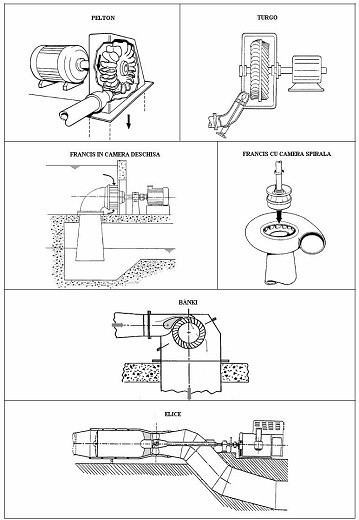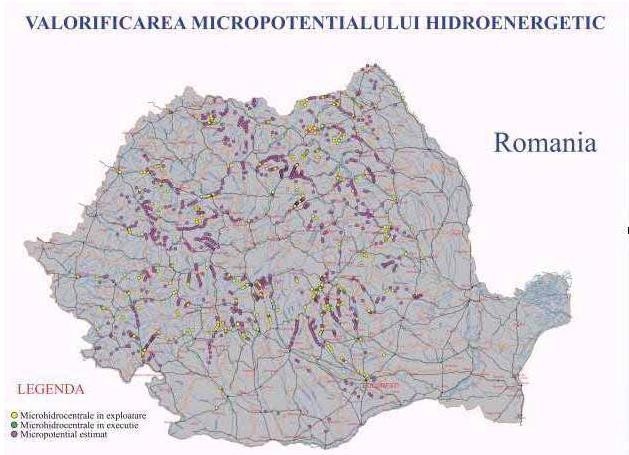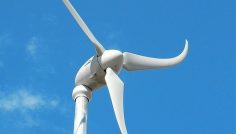
The most important source of renewable energy in Romania (in line with EU requirements), is hydro energy resources of water from interior rivers are valued at approximately 42 billion m3/year, but with a non-developed infrastructure can only count on about 19 million m3/year, due to fluctuations in river flows.
Regarding hydro potential of our country believes that the potential theory of rainfall is about 230 TWh/year, potential theory, the water leakage of about 90 TWh/year, and potential courses of the linear theory of water is 70 TWh/year.
For micro hidro powerplants, it depends on:
- location and investment related (including administrative costs)
- installed power generation and probably (the flow, fall)
- distance from the network
- maintenance requirements (degree of automation, operation without the remote
- personal reliability)
- financial conditions and rate of recovery of energy produced.
Location
Micro hydro power plants (MHP) may be located in mountainous areas, where rivers are fast, are low in areas with large rivers. Below are the main elements of a hydro facilities (Fig.2) and the four most common types of facilities.
Schemes for large and medium fall, using combinations of channel and pipe forced. If the land is rugged construction of the canal is difficult, and then only sometimes forced pipe can buried. In fittings type dam, turbines are placed in the dam body or in its immediate neighborhood, so that there is almost no longer the need for conducts. Other placement option is to use micro-turbines flow stations of water purification or epuisment.
Technologies and equipment for the MHP


Turbine-acting
Pelton consists of a wheel on which are fixed several cups, while a high-speed jet acts tangential to the wheel. Jet hits each cup and is divided into two so that each half is reflected at almost 180 º. Almost all energy is used in water răsucirea cups and the water collected is reflected in a canal.
Turgo is similar to the Pelton but jet strikes the rotor at an angle of 20° so that water falls on one side of the rotor and exits on the other. Therefore the flow is not limited by the amount of water discharged (as in the case of Pelton turbine). Accordingly, Turgo turbine may have a diameter of less than Pelton, produced for the same power.
Banki consists of two discs of thick plates that are welded some pale. Jet of water enters through the top of rototului the curved blade, and exits through the opposite, and thus passing the second time the pale. Pale the form so that each passage through the periphery of rotor water transfer part of its time, before falling with little residual energy.
Turbine jet
Jet turbines using water flow entering the rotor to generate hydrodynamic forces acting on the rotor blade putting them in motion. They differ from the turbines in that the rotor still in a housing completely filled with water.
All reaction turbines have a speaker known as „vacuum” in which the rotor is discharging water. Vacuums discharged water slows and reduces the static pressure under the rotor, increasing the net fall. Propeller-type turbines are similar in principle to the propellers of a ship, but operating in reverse.
Compact turbines
The types of turbines are Kaplan tubular (KT), compact axial (CAT), Kaplan (K), or Francis Banki (F) and consist mainly of the following sub-assemblies:
- A micro hydraulic;
- A mechanism of action;
- One tub of entry;
- An asynchronous generator;
- A closet-electric control automation.
Economic analysis
Microhidro projects are cost effective for a sales price of electricity between 20 Euro/MWh and 36.6 Euro/MWh.
Feasibility of projects is enhanced due micro-hidro mechanisms to promote projects of SRE through the green certificates at a price of between 27 and 55 Euro/Resume by law 220 of 2008. Income from trading of the CO2 improves efficiency projects.
Law 220 of 2008 provides a 2 green certificates for each 1 MWh of delivered electricity network of hydroelectric plants with an installed power of up to 1 MW/unit.



